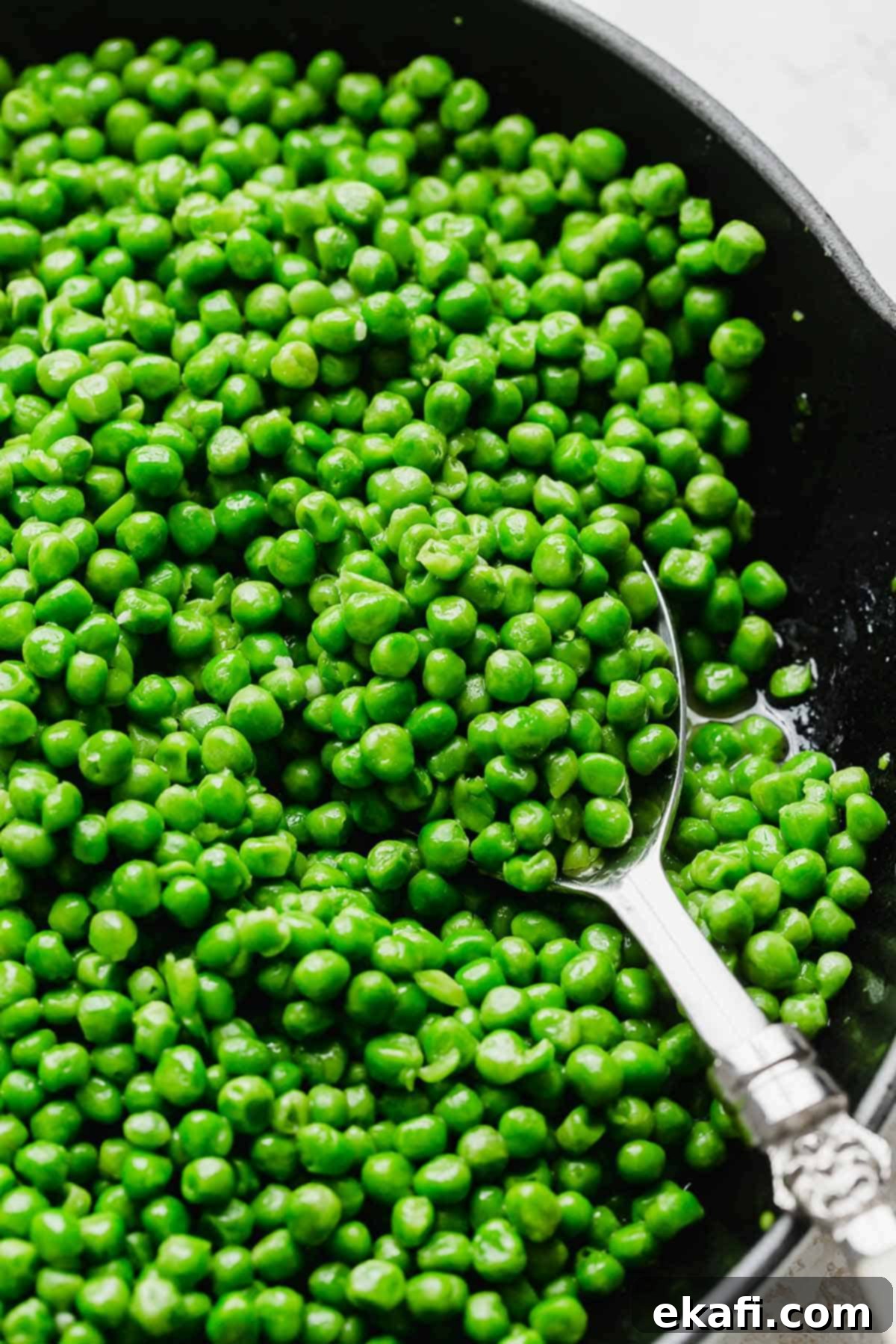Unlock the Sweetness: The Ultimate Guide to Cooking Frozen Peas Perfectly Every Time
If your experience with frozen peas has been limited to boiling them into a bland, waterlogged mush, then you’re in for a delightful revelation! Forget everything you thought you knew about cooking this humble vegetable. The secret to transforming simple frozen peas into a truly irresistible side dish lies in one simple, yet often overlooked, method: sautéing them generously in butter with a touch of sweetness and garlic. This guide will show you how to achieve perfectly tender, vibrant green, and incredibly flavorful peas that will have everyone asking for more.
Looking for more amazing ways to prepare your vegetables? Be sure to explore my other popular recipes, including Brown Sugar Roasted Carrots, Oven Roasted Broccoli, and Sweet Boiled Corn. These dishes, much like our peas recipe, focus on simple techniques to bring out the best in fresh produce.
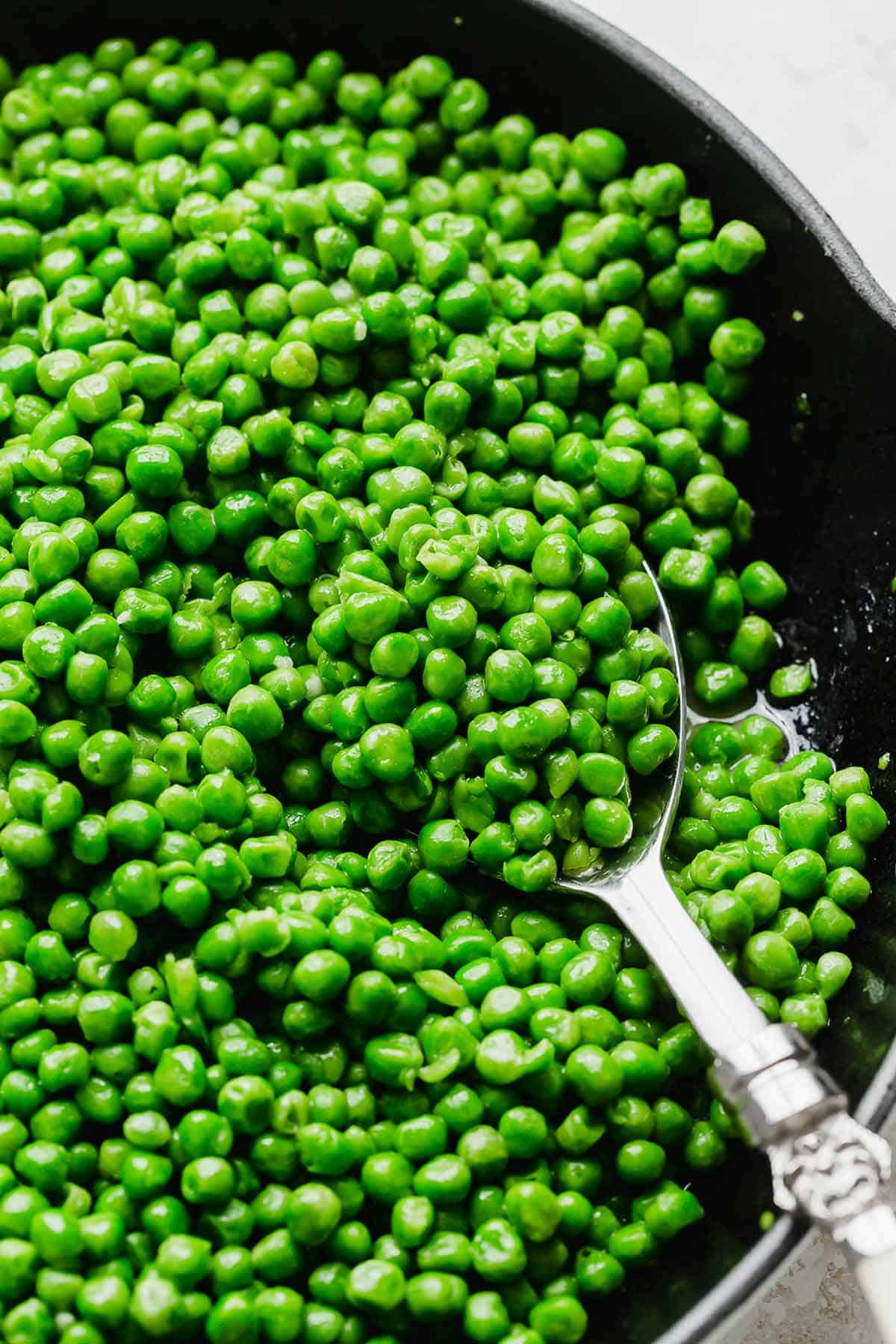
Why This Sautéed Frozen Pea Recipe Works Wonders
This method isn’t just a suggestion; it’s a game-changer for anyone who has ever been underwhelmed by boiled or steamed peas. Here’s why sautéing in butter is unequivocally the best way to cook frozen peas:
- The Definitive Way to Cook Frozen Peas: For too long, the default for frozen peas has been the quick boil or steam. While convenient, these methods strip peas of their delicate flavor and often leave them with a dull color and mushy texture. Sautéing, conversely, seals in their natural sweetness, maintains their vibrant green hue, and provides a delightful tenderness without any sogginess. Once you try this, you’ll understand why boiling peas should be a thing of the past.
- Achieve the Best Cooked Peas Imaginable: The combination of proper cooking technique, rich butter, and a hint of sugar truly elevates the pea. The butter provides a luxurious, creamy coating and deep flavor, while the sugar enhances the peas’ inherent sweetness, creating a perfectly balanced taste. Even garlic, an optional but highly recommended addition, introduces an aromatic depth that makes these peas incredibly addictive. You’ll find yourself craving this simple vegetable side night after night!
- An Effortlessly Easy Vegetable Side Dish: Despite the gourmet results, this frozen pea recipe is incredibly simple and quick to prepare. It requires minimal effort and only a few minutes of cooking time, making it an ideal last-minute addition to any meal. With basic pantry staples, you can create a side dish that delivers maximum flavor with hardly any fuss, perfectly complementing a wide array of main courses from roasted chicken to grilled fish or even a quick weeknight pasta.
The Science Behind Perfectly Cooked Peas
Understanding why sautéing trumps boiling or steaming helps appreciate the superior outcome. When you boil peas, they absorb water, leading to a diluted flavor and a softer, often mushy texture. This process can also leach water-soluble vitamins, diminishing their nutritional value. Steaming is a bit better as it reduces water absorption, but it still lacks the flavor-building potential of direct heat and fat.
Sautéing, on the other hand, involves cooking peas directly in a hot pan with fat (butter, in this case). This method allows for a gentle caramelization of their natural sugars, intensifying their sweetness and creating a more complex flavor profile. The butter provides rich, fat-soluble flavor compounds that coat each pea, locking in moisture and ensuring a tender, yet firm, texture. The quick cooking time also helps preserve their vibrant green color and delicate structure, preventing them from becoming overcooked and gray.
Key Ingredients for Flavorful Peas
Just a handful of simple ingredients are all you need to create this fantastic side dish. Each component plays a crucial role in achieving the best possible flavor and texture:
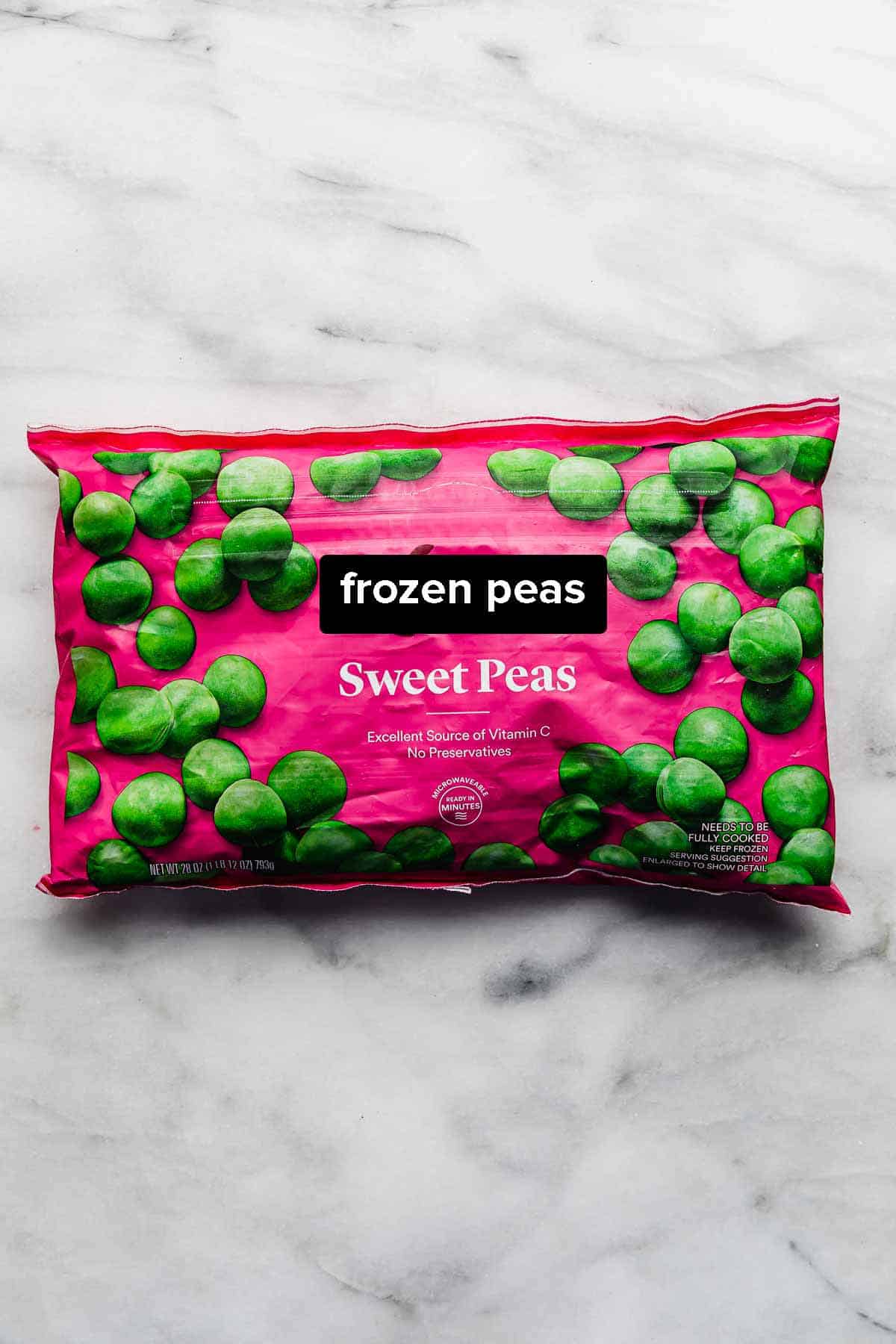
- Frozen Peas: Contrary to popular belief, frozen vegetables are often more nutritious than their “fresh” counterparts found in the produce aisle, especially if those fresh veggies have traveled long distances. Frozen peas are picked at their peak ripeness and immediately flash-frozen, locking in their nutritional value, vibrant color, and sweet flavor. This rapid freezing process also preserves their tender texture, making them a consistently reliable and delicious option. Opt for petite peas if available, as they tend to be sweeter and more delicate.
- Unsalted Butter: Butter is crucial here for both flavor and texture. It provides a rich, creamy mouthfeel and helps the peas cook evenly. Using unsalted butter allows you to control the overall sodium content of your dish. To help the butter melt more quickly and distribute evenly, cut it into tablespoon-sized cubes before adding it to the skillet. You can use either cold or room temperature butter; cold butter might take a minute longer to melt, but the final result will be equally delicious.
- Granulated Sugar: Peas naturally possess a lovely sweetness. A small amount of granulated sugar acts as a flavor enhancer, helping to coax out and highlight that inherent sweetness, making the peas even more irresistible. It balances the savory notes of butter and garlic beautifully without making the dish overtly sweet.
- Garlic Clove (Minced): While optional, a fresh garlic clove adds a wonderful aromatic depth and savory complexity to the peas. Minced garlic infuses the butter and peas with its pungent, warm flavor as it cooks. If you don’t have fresh garlic, a pinch of garlic powder (about 1/4 teaspoon) can be used as a substitute, though fresh is always preferred for the best flavor.
- Kosher Salt: The timing of adding salt is critical for peas! Salt them too early during cooking, and you risk drawing out moisture, which can cause the peas to wrinkle and become tough. For the best texture and appearance, always wait until after the peas are cooked and portioned into individual servings to add salt. A sprinkle of kosher salt enhances the flavor without compromising the texture.
- Freshly Ground Black Pepper: A final flourish of freshly ground black pepper adds a subtle kick and aromatic finish to the dish. Grind it directly over the cooked peas for the freshest taste.
Easy Step-by-Step Instructions
This recipe is incredibly straightforward and comes together in mere minutes. Follow these simple steps for perfectly cooked, flavorful frozen peas:
- Prepare the Skillet and Add Ingredients: Place a large skillet (a 12-inch cast iron skillet works wonderfully for even heat distribution) over medium heat. Once the pan is warm, add 2 pounds of frozen peas, 10 tablespoons of unsalted butter (cut into cubes for faster melting), 1 tablespoon of granulated sugar, and the 2 minced garlic cloves. There’s no need to thaw the peas beforehand; they go straight from the freezer to the pan!
- Cook Until Tender and Flavorful: Cook the mixture, stirring frequently, to ensure the butter melts evenly and coats all the peas. Continue cooking for approximately 5-8 minutes, or until the butter is fully melted, the peas are heated through, and they have reached your desired level of tenderness. They should be vibrant green and slightly sweet. Avoid overcooking to prevent mushiness.
- Serve and Season: Once cooked, immediately portion the peas into individual serving bowls. Now is the time to season them to perfection! Sprinkle with kosher salt and freshly ground black pepper to taste. Enjoy these creamy, sweet, and garlicky peas as a delightful side dish with your favorite meal.
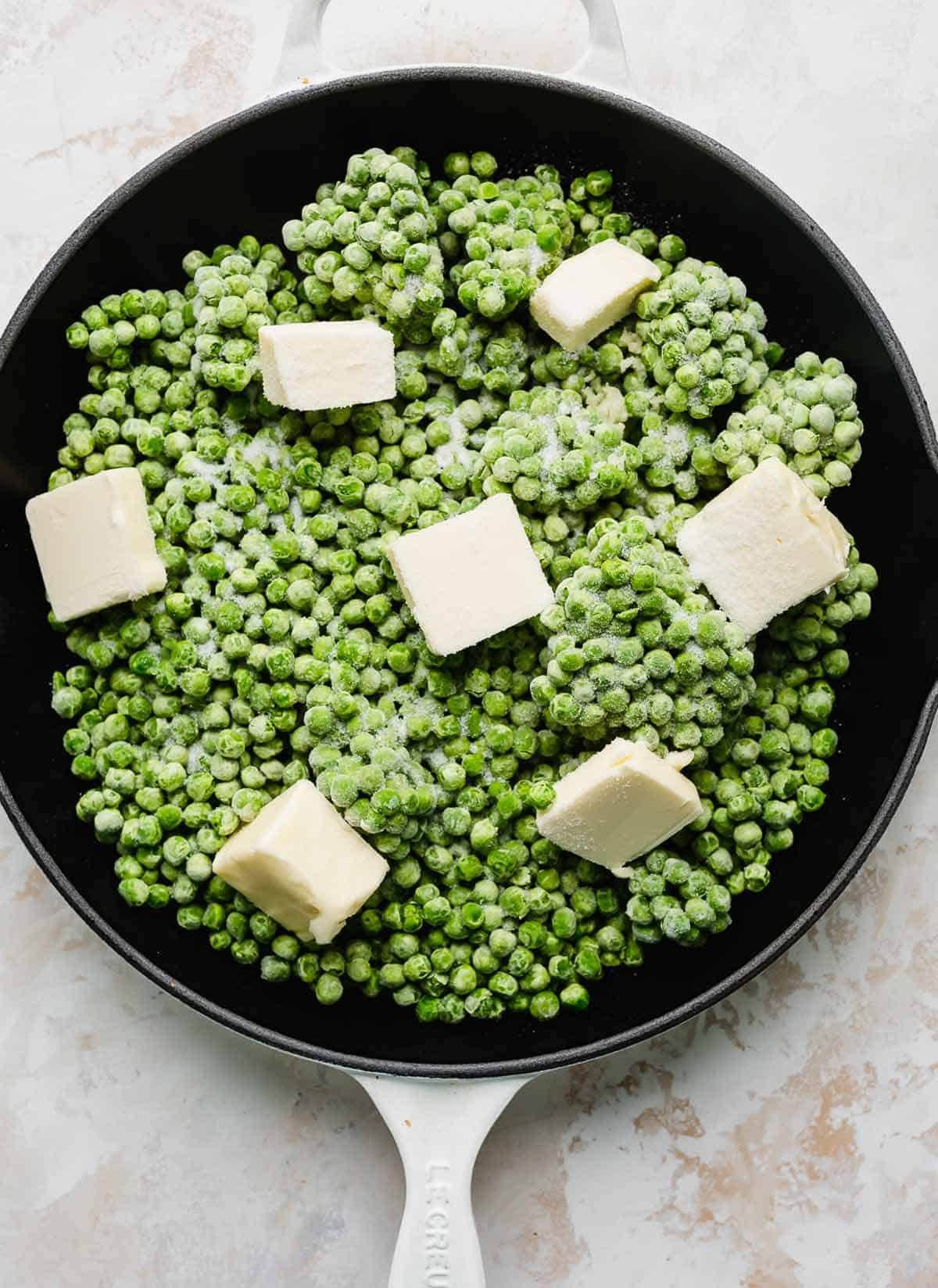
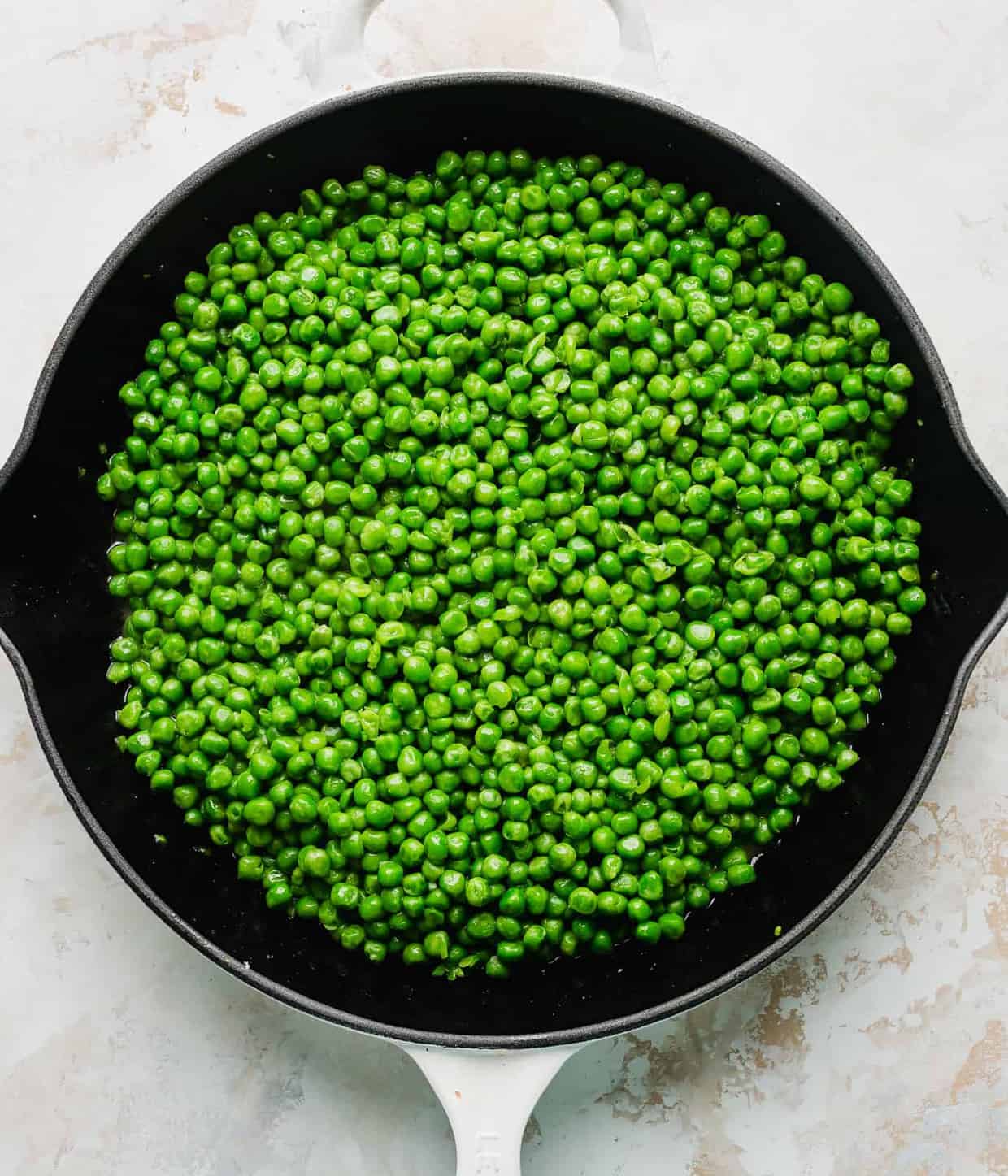
Expert Tips for Your Best Frozen Peas
To ensure your sautéed peas turn out perfectly every time, keep these crucial tips in mind:
- Timing is Everything for Salt: This is a golden rule for cooking peas! Adding salt too early in the cooking process can draw moisture out of the peas, causing them to shrivel, wrinkle, and become tougher. To maintain their plump, tender texture and vibrant color, always wait until after you’ve served the peas into individual bowls before seasoning them with salt. This ensures maximum crispness and freshness.
- Ditch the Boil: While many frozen pea packages instruct you to boil them, this method is truly a disservice to the delicate vegetable. Boiling leads to waterlogged, bland, and often mushy peas that lose their bright green color and sweet flavor. Trust this sautéing method instead – it’s designed to bring out the very best in your frozen peas, yielding a far superior texture and taste.
- Frozen Over Fresh: This might come as a surprise, but for peas, frozen often outperforms fresh! According to culinary experts like Cook’s Illustrated, fresh peas can often be starchier and less sweet than their frozen counterparts. Frozen peas are typically harvested at peak ripeness and flash-frozen within hours, capturing their optimal sweetness and tenderness. This process ensures consistent quality that’s hard to beat with conventional fresh market peas.
- Choose the Right Skillet: A large skillet, preferably cast iron or another heavy-bottomed pan, is ideal. The wider surface area allows the peas to cook in a single layer or close to it, promoting even cooking and preventing them from steaming rather than sautéing.
- Don’t Overcrowd the Pan: If you’re cooking a very large batch, consider doing it in two smaller batches. Overcrowding the pan can lower the temperature too much, causing the peas to steam rather than sauté, which will affect their texture.
- Monitor Heat: Keep the heat at medium. Too low, and the peas will take too long to cook; too high, and the butter might burn before the peas are tender.
Elevate Your Peas: Variations & Flavor Boosters
While the basic recipe is fantastic on its own, don’t hesitate to customize your sautéed peas with these delicious additions:
- Fresh Herbs: A sprinkle of fresh herbs at the end can brighten the flavor immensely. Chopped fresh parsley, mint, chives, or basil are all excellent choices that complement the sweetness of peas beautifully.
- Citrus Zest or Juice: A squeeze of fresh lemon juice or a pinch of lemon zest can add a delightful acidity and brightness that cuts through the richness of the butter, elevating the overall flavor profile.
- Cheesy Goodness: For a more decadent touch, sprinkle some freshly grated Parmesan cheese over the warm peas just before serving. A crumbled feta cheese can also add a pleasant tang.
- Spicy Kick: A tiny pinch of red pepper flakes or a dash of black pepper can introduce a subtle warmth without overpowering the delicate pea flavor.
- Creamy Indulgence: For an extra rich side, stir in a tablespoon or two of heavy cream or crème fraîche during the last minute of cooking.
- Onion or Shallots: For added aromatic complexity, sauté a tablespoon of finely minced onion or shallots with the garlic before adding the peas.
Make Ahead, Storing, and Reheating
Due to the quick cooking time and the nature of frozen vegetables, making these peas significantly ahead of time isn’t typically necessary or recommended for the best results. However, here are some tips for managing them:
- Make Ahead: While you can cook them up to an hour in advance and keep them warm in a covered dish, peas are truly best enjoyed freshly made. The recipe is so quick that it’s often easier to cook them just before your meal.
- Storing Leftovers: Any leftover sautéed peas can be stored in an airtight container in the refrigerator for 2-3 days. Make sure they cool completely before transferring them to the container to prevent condensation.
- Reheating: For best results, gently reheat leftover peas in a skillet over medium-low heat with a small knob of butter, stirring occasionally until warmed through. You can also microwave them, but be careful not to overcook them, as this can make them mushy.
- Freezing Cooked Peas: Freezing cooked peas is not recommended, as the delicate texture will suffer upon thawing, becoming even softer or mushy. It’s always best to cook them fresh from frozen.
Frequently Asked Questions About Cooking Frozen Peas
With this sautéing method, frozen peas typically take a short 5-8 minutes to cook through. The cooking time ensures they are tender but still retain a slight bite and their vibrant green color. For the sweetest and most delicate peas, look for “petite” or “extra fine” varieties, which tend to cook slightly faster.
Absolutely not! While many packages suggest boiling or steaming, cooking frozen peas in water is generally not the best approach. It can lead to bland, waterlogged, and often mushy peas. For optimal flavor and texture, sauté them in butter with a touch of sugar and garlic, as outlined in this recipe. This method produces far superior results.
No, there’s no need to thaw frozen peas before cooking them using this sautéing method. In fact, it’s often better to cook them directly from frozen. This helps them maintain their firm texture and prevents them from becoming overly soft or watery. Simply add them straight from the freezer to your hot skillet.
Most frozen vegetables, including peas, are blanched before being flash-frozen. Blanching involves briefly immersing them in boiling water followed by an ice bath. This process stops enzymatic reactions that cause spoilage and helps preserve color, flavor, and nutrients. While blanched, they are not fully cooked to eating tenderness. You could technically thaw and eat them, but they would be much firmer and less palatable than fully cooked peas.
It depends on your preference and how you plan to use them. Fresh peas can indeed be eaten raw; they make a sweet and crunchy snack straight from the pod, and some salads call for them uncooked. However, cooking them, especially using this sautéing method, enhances their natural sweetness and makes them incredibly tender and flavorful. For most side dishes, cooking fresh peas is recommended.
Absolutely! If you have fresh peas from your garden, they can be used in this recipe. Keep in mind that garden peas can sometimes be starchier than commercial frozen peas. Adjust the cooking time slightly if needed, and ensure they reach your desired tenderness. The butter and sugar will still work their magic to bring out the best in your homegrown harvest!
While butter offers a unique richness and flavor that truly complements peas, you can certainly use olive oil for a dairy-free alternative or if you prefer a lighter taste. Extra virgin olive oil will add a fruity note, or you can use a neutral oil like avocado or grapeseed oil. The cooking method remains the same.
The key to vibrant green peas is to avoid overcooking them. Peas cook quickly, so keep a close eye on them. The sautéing method, combined with a relatively short cooking time, naturally helps preserve their beautiful color. Immediately removing them from the heat once tender will prevent them from turning dull or olive green.
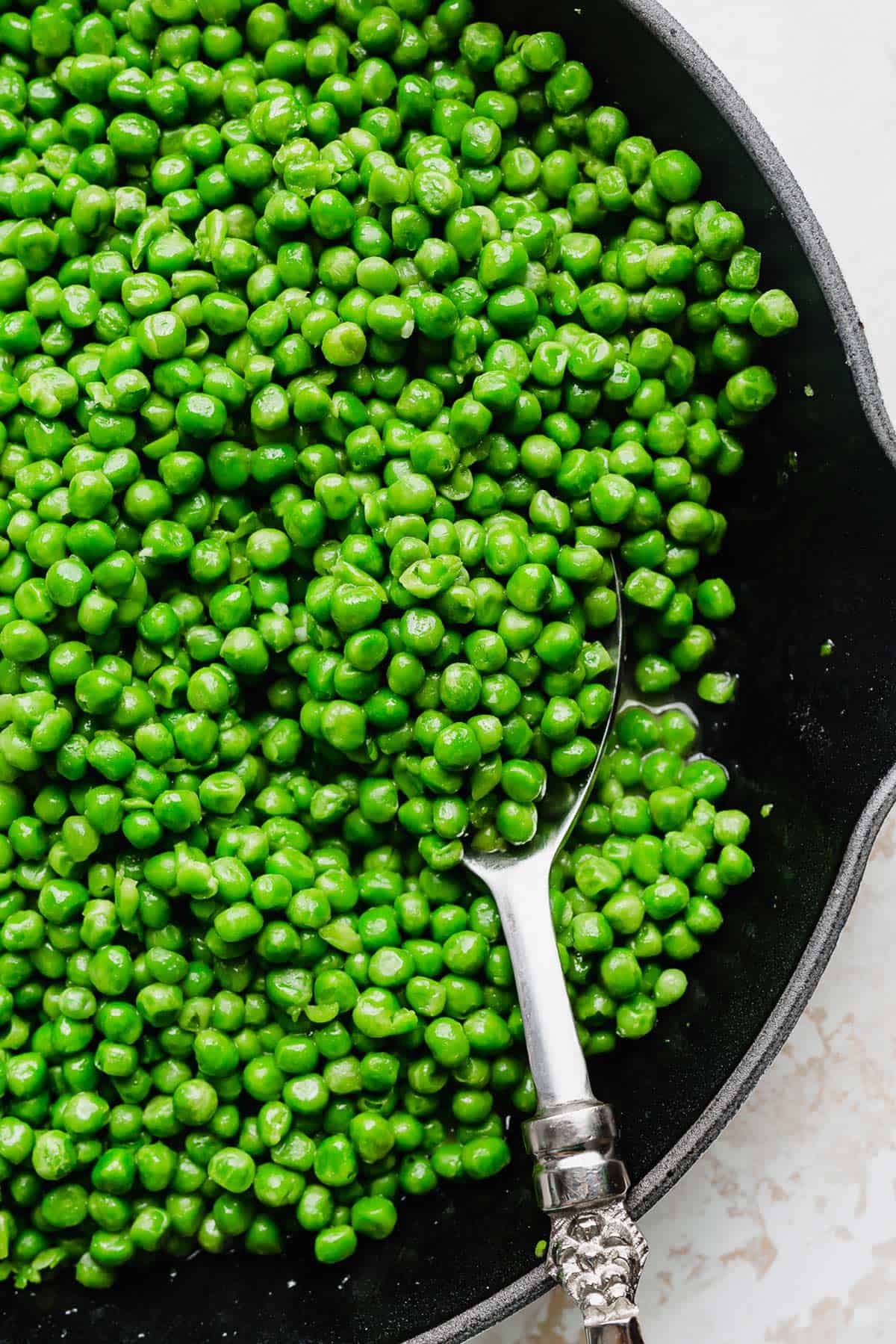
More Easy Vegetable Recipes You’ll Love
If you enjoyed this simple yet flavorful pea recipe, here are some other fantastic vegetable dishes that are equally easy to prepare and guaranteed to be a hit:
- Sheet Pan Roasted Root Vegetables
- Baked Sweet Potato
- Honey Butter Skillet Corn
- Buttery Parsley Potatoes
- Roasted Frozen Cauliflower
Did you make this recipe? I’d love to hear about it! Leave a star rating and review or scroll below the recipe card and do so there.
Stay up-to-date by following us on Instagram, TikTok, YouTube, Facebook, and Pinterest.
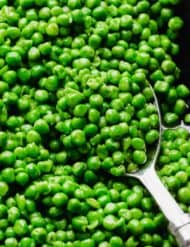
Save Recipe
Review Recipe
5 from 7 votes
How to Cook Frozen Peas
If you’ve been boiling or steaming peas, you’re doing it wrong! Get ready to transform your frozen peas into a delicious, buttery, and perfectly tender side dish that will become a family favorite.
Prep Time: 5 mins
Cook Time: 7 mins
Total Time: 12 mins
Servings: 6 servings
Ingredients
- 2 lbs frozen peas
- 10 tablespoons unsalted butter, cubed (see notes) (Recommended Unsalted Butter)
- 1 tablespoon granulated sugar
- 2 garlic cloves, minced
- Kosher salt, to taste
- Freshly ground black pepper, to taste
Equipment
- 12 inch cast iron skillet, with lid
Instructions
-
In a large skillet over medium heat, add the frozen peas, cubed butter, granulated sugar, and minced garlic.

-
Cook, stirring often, until the butter is fully melted and the peas are cooked to a tender-crisp texture, which should take about 5-8 minutes.

-
Portion into individual servings and season immediately with kosher salt and freshly ground black pepper to taste. Serve warm and enjoy!
Notes
- Using room temperature butter can help it melt faster, but cold butter works just as well. The peas will be perfectly cooked by the time the butter is fully melted.
- Do not salt the peas too soon! Salting during cooking will dehydrate them and cause them to wrinkle. Always add salt after serving into individual bowls.
- Ignore the package instructions that recommend boiling. This sautéing method is the superior way to cook frozen peas for optimal flavor and texture.
Nutrition
(Nutrition values are approximate and may vary based on ingredients and preparation.)
- Calories: 299 kcal (15% Daily Value)
- Carbohydrates: 24g (8% Daily Value)
- Protein: 8g (16% Daily Value)
- Fat: 20g (31% Daily Value)
- Saturated Fat: 12g (60% Daily Value)
- Cholesterol: 50mg (17% Daily Value)
- Sodium: 10mg
- Potassium: 369mg (11% Daily Value)
- Fiber: 8g (32% Daily Value)
- Sugar: 11g (12% Daily Value)
- Vitamin A: 1740 IU (35% Daily Value)
- Vitamin C: 61mg (74% Daily Value)
- Calcium: 45mg (5% Daily Value)
- Iron: 2mg (11% Daily Value)
Author: Whitney Wright
Course: Side Dish
Cuisine: American
Did you make this recipe?
Please leave a star rating and review on the blog post letting me know how you liked this recipe! Take a picture and tag @saltandbaker on TikTok, Instagram, and Facebook so I can see what you’re making!
